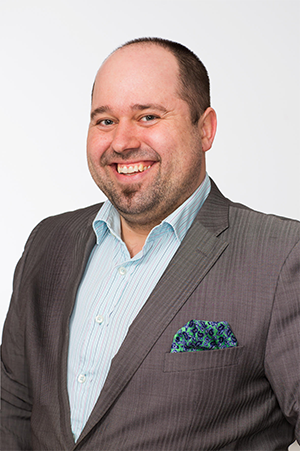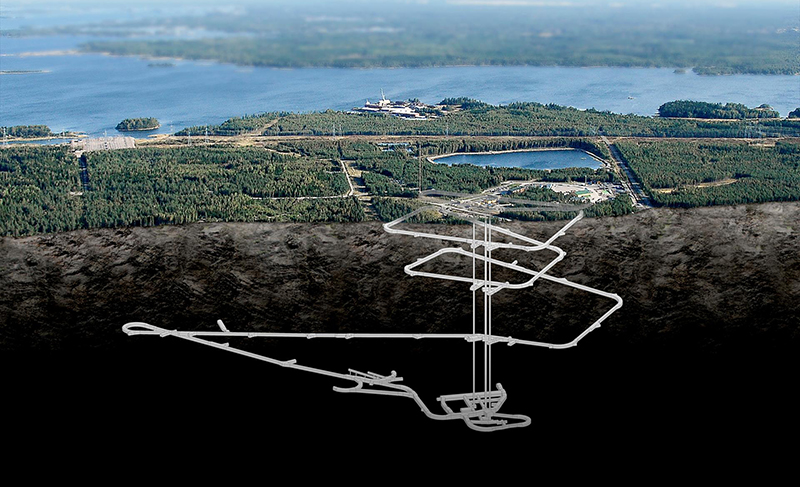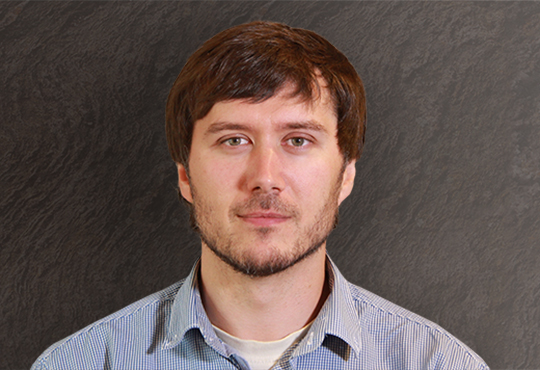Nuclear waste management expert Posiva Oy is responsible for the final disposal of spent nuclear fuel generated by its owners, Teollisuuden Voima and Fortum, as well as the related surveys. The company is currently building a final disposal facility for spent nuclear fuel in the Olkiluoto bedrock at Eurajoki, at a depth of approximately 430 metres. Comatec is responsible for the design, production supervision, commissioning, project management and procurement of the related canister transfer and installation vehicle (KSAA).

Manager Jarkko Stenfors from Posiva works in close cooperation with Comatec.
Finland has four nuclear power plant units in operation. Two of these are located in Eurajoki, and the other two in Loviisa. A fifth one is currently under construction. This form of electricity production generates radioactive nuclear waste, which must be handled in a manner that will not harm the environment.
“Nuclear waste has not been disposed of in any country yet; instead, it is being kept in interim storage facilities. Finland is the first country in the world to ensure safe final disposal of nuclear waste,” says Manager Jarkko Stenfors of Posiva’s Final Disposal Equipment Unit.
The cooperation between Posiva and Comatec started more than a decade ago. Stenfors calls the partner a “royal supplier” that has designed several prototype devices to test the disposal concept. Now, the final production devices are being designed.
“We do not have the required expertise to design vehicles in-house. We are a project organisation and the plant supplier of the disposal facility, as well as its end user once it is complete,” Stenfors explains.
KSAA will play a major role in disposal operations. It will lift the disposal canisters from the canister storage into a massive radiation protection tube, move the tube to the deposition tunnel and safely install the canister in the deposition hole.
The canisters are massive containers with a nodular cast iron insert and a copper shell. Around 2,800 canisters will be required to dispose of the spent nuclear fuel from the four operational power plant units and the fifth plant unit currently under construction. The final disposal operations will continue for around a hundred years.
A similar device has never before been designed anywhere in the world, which meant that learning by example was impossible. In addition, strict safety requirements had to be considered in the design. Thus, Posiva provided thousands of rows of safety requirements, while the Regulatory Guides: Nuclear Safety (YVL) of the Finnish Radiation and Nuclear Safety Authority listed dozens more. This is because the vehicle is a nuclear safety classified system (SC3).
“In addition to technical device expertise and vehicle technology competence, Comatec has needed extensive design management skills and the ability to manage these requirements,” Stenfors says.
The starting point for handling the canisters is single failure tolerance. As a result, the safety of the canister must not be compromised if any single component fails, and the restoration of the canister to a safe state must be possible. During transport, the canister will be kept inside a radiation shield, which isolates it and protects the people who work close to the device.
Another major challenge has been adapting the device and its functions to the limited space available underground. According to the plans, there will be more than a hundred deposition tunnels with a total length of approximately 42 kilometres. These will cover an area of around three square kilometres.

Posiva’s final disposal facility for spent nuclear fuel and its underground tunnels where KSAA will operate.
“We are making the tunnels as small as possible to reduce the cost of backfilling the tunnels with bentonite clay. Comatec has successfully designed the device and its functions for a space that is 4.1 metres high. The radiation shield cylinder, which rises up over the deposition hole and lowers the canister into the hole, takes up the most space,” Stenfors explains.
Safety is further improved by KSAA’s electric transmission system. The battery pack does not emit exhaust fumes, so the people working in the tunnel will not be exposed to them. Fuel tanks are also unnecessary, which reduces the risk of fire.
The battery chemistry has been selected from the perspective of fire safety; the risk of severe battery fire is practically non-existent. The battery pack has also been designed so that the vehicle can complete the entire canister deposition cycle with one charge. According to Stenfors, the battery pack is ground-breaking, because it has been approved for use in the underground deposition process.
The vehicle, which weighs more than a hundred tonnes, will be initially remotely controlled underground. The goal is to make it move autonomously along optimal routes without touching any walls and stopping when it encounters an unexpected obstacle. However, a person will still monitor the device from the control room.
“We want to increase the facility’s degree of automation in other ways as well. If we can reduce the required person-years throughout the hundred years of operation, we will achieve major savings for Finnish society at large, because increased production costs will directly influence the price of electricity,” Stenfors continues.
Posiva gives high praise for the first phase of the project; all the technical goals it set were met.
“Comatec has made excellent innovations. We were able to achieve technical goals that one could not dare to demand from some design organisations – or even believe possible.”
According to Stenfors, the most major innovation is the device as a whole.
“We are making industrial history, because we are the first to create a device for such a small underground space with such strict requirements.”
KSAA consists of an innovation chain that includes all the main functions. It is like a Transformer in that it can move its own components and modify itself for different functions while on the move.
The project has been divided into four phases: concept design and the acquisition of the main components, detailed design, manufacture, as well as testing and commissioning. The estimated workload for the whole project is more than 30,000 working hours. However, the first phase has already taken more than 10,000 hours.
“Concept design and the design of the device’s key solutions as well as the definition of performance have required major input from various areas of expertise, such as, mechanical and electrical design, automation, strength calculation and safety. Our staff consists of top experts in the field, and the project is managed by a competent project manager,” says Andrei Kotliar, Comatec’s Engineering Manager.
COVID-19 made the design project even more challenging. However, the examinations of the 3D model and other project meetings could be completed remotely, according to Stenfors.
“The cooperation with Comatec has been very fluent. Indeed, I’m amazed by the pace and energy of Comatec during this project. I will tip my hat to them if they can keep up the same pace until the end. On the other hand, this project is a showcase for the global nuclear industry.”
The KSAA project has now proceeded to the detailed design phase, which is estimated to be completed in May 2021.
More information on Posiva’s final disposal solution
_
Text by Marjaana Lehtinen
Images by Posiva Oy
Comatec Mobility Finland

Mobile Machinery and Commercial Vehicles, Mechanical Engineering
Engineering Manager
+358 44 052 9634